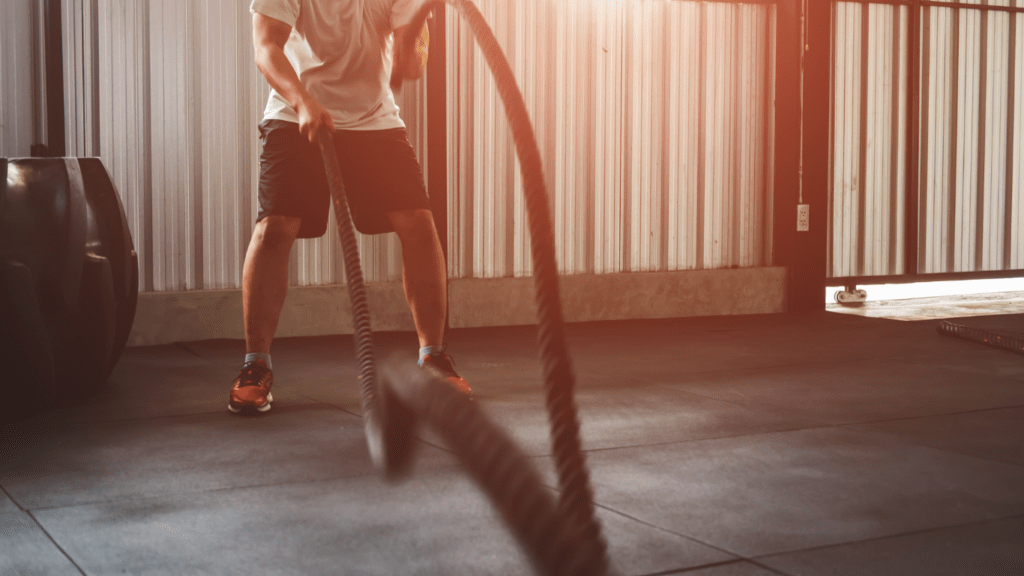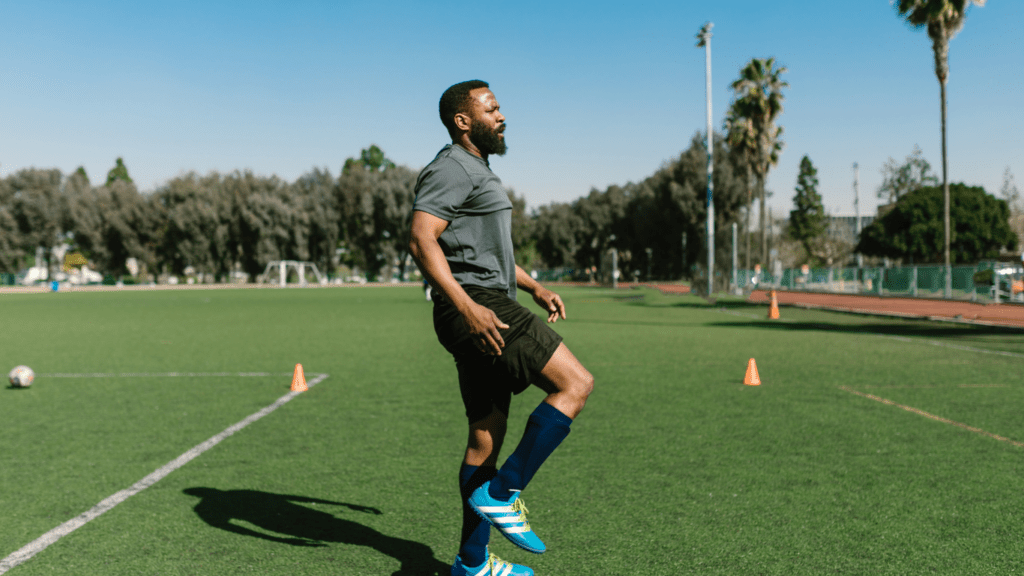In the world of explosive sports, strength and power aren’t just advantageous—they’re essential. As an athlete striving for peak performance, I’ve learned that mastering these elements can be the difference between winning and merely competing.
Whether you’re sprinting down the track or jumping to make a game-winning shot, the right strategies can propel you to new heights. This article dives into proven methods for developing strength and power tailored specifically for explosive athletes.
From resistance training techniques to plyometric exercises, I’ll share insights that have transformed my own training regimen. Let’s explore how to harness these strategies to unlock your full athletic potential.
Overview of Strength and Power Development
Strength and power development is crucial for explosive athletes aiming to maximize performance. This process involves specific training techniques that enhance muscle strength and explosive capabilities.
Resistance Training
Resistance training builds muscle strength and size. Key methods include:
- Heavy Lifting: Engaging in low-rep, high-weight exercises increases overall strength. Common lifts include squats, deadlifts, and bench presses.
- Dynamic Efforts: Utilizing lighter weights with explosive movements improves speed and power. Exercises like power cleans and snatch employ fast, powerful lifts.
- Progressive Overload: Gradually increasing weight or intensity ensures continuous strength gains. I track my progress weekly to adjust my training loads.
Plyometric Exercises
Plyometric exercises focus on explosive power development. Effective exercises include:
- Box Jumps: Jumping onto elevated surfaces enhances leg power. Increasing box height progressively boosts intensity.
- Depth Jumps: Stepping off a box and jumping upon landing trains reactive strength. This exercise effectively develops quick force application.
- Bounding: Leaping forward emphasizes explosive leg drive. This enhances both speed and power output for sprinting.
Periodization
Strategic planning through periodization optimizes strength and power gains. Key factors include:
- Macrocycles: Long-term phases focusing on different goals, such as hypertrophy or maximal strength. Typically spans several months.
- Mesocycles: Middle phases lasting weeks with specific focuses, like power or endurance training. I include varying rep ranges and loads.
- Microcycles: Short-term weeks targeting daily training adjustments. This helps me refine technique and recovery strategies.
Nutrition and Recovery
Proper nutrition and recovery directly impact strength and power development. Important principles include:
- Protein Intake: Consuming adequate protein supports muscle recovery and growth. I aim for 1.6 to 2.2 grams of protein per kilogram of body weight daily.
- Hydration: Staying hydrated enhances performance during training. Drinking water before, during, and after workouts maintains optimal muscle function.
- Rest and Sleep: Adequate sleep and rest days facilitate recovery. I prioritize 7-9 hours of quality sleep nightly for optimal performance.
Integrating these strategies enables explosive athletes to enhance strength and power effectively. By focusing on resistance training, plyometric exercises, periodization, nutrition, and recovery, athletes can achieve significant performance improvements.
Key Components of Explosive Performance
Explosive performance relies on several key components, which work together to enhance an athlete’s ability to generate power quickly and efficiently. I’ll detail muscle strength and power, along with speed and agility.
Muscle Strength and Power
Muscle strength and power serve as the foundation for athletic explosiveness. Strength training exercises such as squats, deadlifts, and bench presses build muscle mass and increase force production.
Incorporating Olympic lifts like the clean and jerk or snatch enhances power by training the muscles to generate force rapidly. Utilizing progressive overload is crucial, as it encourages continual strength gains. I focus on varying weights and repetitions over time to avoid plateaus and stimulate muscle adaptation.
Plyometric exercises complement these methods, as they utilize the stretch-shortening cycle to improve muscular efficiency and increase explosive output. Integrating both resistance and plyometric training creates a robust approach to developing muscle strength and explosive power.
Speed and Agility
Speed and agility are essential components of explosive performance, enabling athletes to respond quickly and decisively in competitive situations. Sprinting drills, such as short sprints or acceleration workouts, help enhance speed by improving stride length and frequency.
I prioritize drills that focus on explosive starts and acceleration to mimic game scenarios. Agility training methods, such as cone drills, ladder drills, and quick lateral movements, improve footwork and body control.
These exercises develop the neuromuscular system’s connectivity, allowing for rapid direction changes and improved coordination. Combining speed and agility training with strength work creates a well-rounded training program that optimally enhances explosive athletic performance.
Training Methods for Explosive Athletes
In training explosive athletes, selecting effective methods is crucial for optimizing performance. Two powerful strategies are plyometric training and Olympic weightlifting.
Plyometric Training
Plyometric training focuses on explosive strength and power development through fast, high-intensity movements. Key exercises include:
- Box Jumps: Athletes explode upward onto a stable platform, enhancing explosive leg power.
- Depth Jumps: Athletes drop from a height and jump as soon as they land, improving reactive strength.
- Bounding: Athletes perform exaggerated strides to develop power through explosive leg drives.
Plyometric exercises rely on the stretch-shortening cycle, where muscles enhance power through eccentric and concentric contractions. This training leads to increased muscle recruitment and improved force production, essential for explosive sports.
Olympic Weightlifting
Olympic weightlifting emphasizes maximum power and speed through complex movements. Key lifts include:
- Clean and Jerk: Athletes lift a barbell from the floor to shoulders, then overhead in a single motion, requiring explosive strength.
- Snatch: Athletes lift a barbell from the ground to an overhead position in one fluid movement, emphasizing speed and full-body coordination.
These lifts train athletes to generate rapid force and improve overall athletic performance. Olympic weightlifting promotes muscle strength, coordination, and the ability to produce force quickly, all of which are critical for explosive movements in various sports.
Importance of Periodization
Periodization plays a vital role in optimizing strength and power development for explosive athletes by structuring training to maximize performance gains while minimizing injury risk.
Macrocycles and Microcycles
Macrocycles encompass long-term training phases, typically lasting several months or an entire year, focusing on an athlete’s overall objectives. I divide macrocycles into smaller units called mesocycles, which focus on specific goals such as building strength, power, or endurance.
Each mesocycle often lasts a few weeks to a few months. Microcycles further break down these phases into weekly training plans, allowing focused variations in intensity and volume. For example, one might emphasize heavy lifting in one microcycle and explosive lifts in the next. This structured approach maintains progress while preventing plateaus.
Recovery and Adaptation
Recovery is essential for effective strength and power development. I prioritize rest days and active recovery sessions to allow muscles to repair and adapt to training stress. Strategic recovery periods enable athletes to achieve higher levels of performance during subsequent training cycles.
Adequate sleep, nutrition, and hydration are foundational for optimal recovery. Incorporating deload weeks, where training intensity decreases, fosters adaptation and prepares the body for the next training phase. Balancing workload and recovery is critical for sustaining progress and enhancing explosive capabilities.
Nutritional Considerations
Effective nutrition plays a vital role in strength and power development for explosive athletes. Understanding macronutrient ratios and utilizing the right supplementation strategies enhances training outcomes and optimizes performance.
Macronutrient Ratios
I prioritize balanced macronutrient ratios to support training and recovery. For explosive athletes, a general guideline is to consume:
| Macronutrient | Recommended Percentage |
|---|---|
| Carbohydrates | 50-60% |
| Protein | 20-30% |
| Fats | 20-30% |
Carbohydrates fuel high-intensity workouts and replenish glycogen stores, making them critical for performance. I select complex carbs like oats, brown rice, and sweet potatoes for sustained energy.
Protein supports muscle repair and growth, so I include sources like lean meats, fish, eggs, dairy, and plant-based proteins. Fats, especially healthy options like avocados, nuts, and olive oil, provide essential fatty acids and hormonal support. I adjust these ratios based on training intensity and specific goals, ensuring adequate intake to maximize strength and power gains.
Supplementation Strategies
I incorporate targeted supplements to complement my nutrition and training regimen. Some effective supplements for explosive athletes include:
| Supplement | Benefits |
|---|---|
| Creatine | Increases strength, power, and muscle mass |
| Beta-Alanine | Enhances endurance by delaying fatigue |
| Branched-Chain Amino Acids (BCAAs) | Supports muscle recovery and reduces soreness |
| Protein Powder | Aids in meeting daily protein requirements |
Creatine enhances ATP production, supporting short bursts of intense activity vital for explosive movements. Beta-alanine buffers acid accumulation, allowing for improved training capacity. I use BCAAs for recovery, especially after intense sessions, to mitigate muscle breakdown.
Protein powder serves as a convenient option to meet protein intake demands when whole food sources are insufficient. I consult with a nutritionist or healthcare professional to tailor supplementation to my needs and ensure safety.




